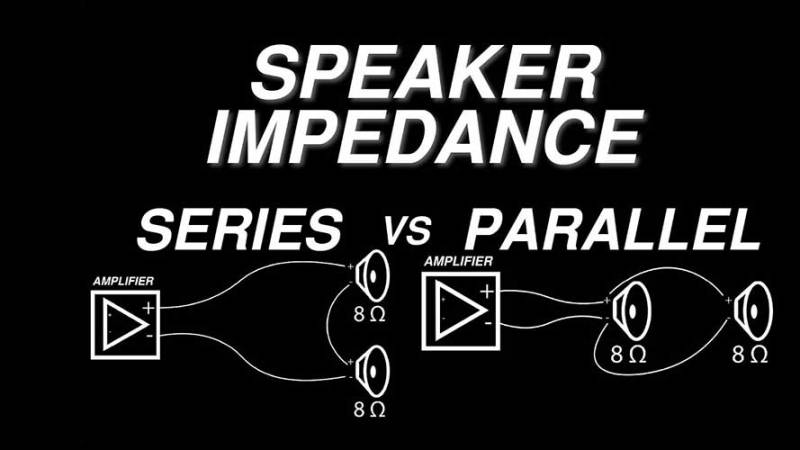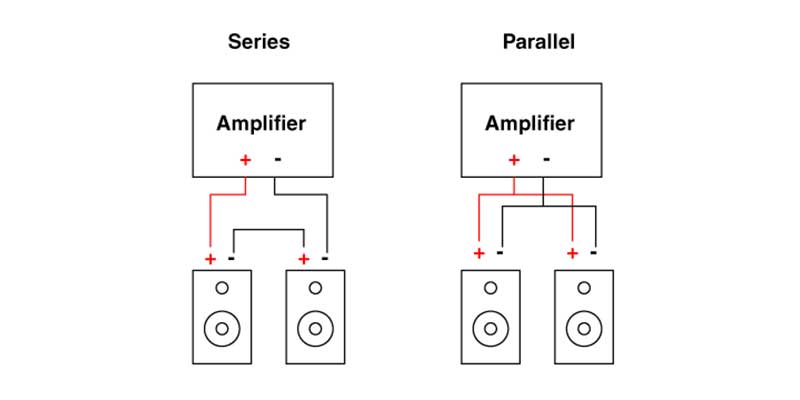Are Speakers Louder in Series or Parallel (Answered)
Are you wondering if you should wire your speakers in series or parallel? Well, wonder no more! We’ve done the research, and we’re here to give you the answer.
So, if you’re looking to get the best sound possible, it’s worth taking the time to learn about the pros and cons of each method.

Parallel vs Series Wiring Speakers: Which is Louder?
If you’re looking for speaker setups that can get loud, you’re going to want to go with parallel speakers.
Of course, there are a few things to keep in mind when setting up your speakers in parallel, the most important being impedance. You’ll need to make sure that your amplifier can handle the load of the speakers connected in parallel.
Why are Speakers Louder in Parallel?
There are reasons why speakers are louder in parallel. Reduced impedance and crossover shifts, as well as increased power for speakers connected in parallel, are the main reasons for this.
Firstly, connecting your speakers in parallel reduces the impedance of each speaker, which in turn creates a louder and more accurate sound.
Additionally, there are no crossover shifts for speakers in parallel. This means frequency remains the same when a sound signal is being preferred from one speaker to another.
Lastly, speakers in parallel don’t share the same power and work half as much as their series counterparts. The latter has to share power equally from the same amplifier.
Why does it Matter if Speakers are in Series or Parallel?
The way you wire your speakers determines overall impedance, voltage, how current flows, and how the system handles crossover shifts.

Impedance
When speakers are connected in series, the total impedance of the system goes up. This is because each speaker adds to the overall impedance of the system.
So, if you have two 8-ohm speakers connected in series, the total impedance of the system is 16 ohms.
However, when speakers are connected in parallel, the total impedance of the system goes down. This is because each speaker reduces the overall impedance of the system.
Therefore, if you have two 8-ohm speakers connected in parallel, the total impedance is 4 ohm.
Voltage
When speakers are connected in series, the voltage is distributed evenly between them. This results in a more balanced sound, with each speaker reproducing a similar frequency range.
However, because the voltage is evenly distributed, the overall volume will be lower than if the speakers were connected in parallel.
Speakers connected in parallel, on the other hand, receive the full voltage from the amplifier. This results in a higher overall volume, but the sound may be less balanced because the different speakers will reproduce different frequency ranges.
Current Flow
Series speakers are connected in a series circuit, meaning the current has to flow through each speaker to reach the next one.
Parallel speakers are connected in a parallel circuit, meaning the current can flow through each speaker independently.
Crossover Shift
Crossover shift is a problem when you wire speakers in series as a load of all speakers is treated as one, causing frequency change and, eventually sound distortion.
That is why series wiring is only ideal for subwoofers, tweeters, and same range or frequency speakers.
If you wire speakers in parallel, the system treats each load independently and hence can bypass sound distortion usually caused by crossovers.
Does the Number of Speakers in Series or Parallel Affect Sound Quality?
If you’re looking to improve the sound quality of your speaker setup, you may be wondering if the number of speakers in series or parallel affects sound quality. The answer is yes. The number of speakers in series or parallel can affect sound quality.
In general, adding more speakers in series will improve sound quality, while adding more speakers in parallel will decrease sound quality.
More speakers in parallel increase power draw due to reduced impedance leading to an overload that eventually compromises sound quality. The same can’t be said for speakers in series, as power is shared among all speakers equally.
Does it make a Difference if Parallel or Series Speakers are Identical?
In a series system, the speakers are all in a line, one after the other. The sound from each speaker blends together, and the system can’t handle a crossover.
So, if you’re trying to create a surround sound system, you’ll need to use identical speakers in a series system.
Now, let’s say you have two pairs of speakers, and you’re trying to decide whether to put them in series or parallel. If they’re identical, it doesn’t really matter which configuration you choose, as long as impedance requirements are met.
However, if they’re not identical, it’s better to put them in parallel. That way, each speaker can put out its own sound without being affected by the other speaker.
Frequently Asked Questions
Q. What Are the Pros and Cons of Connecting Speakers in Series?
PROS:
- The less power required for speakers connected in series reduces chances of overload on amps.
- Easy wiring as all speakers are first connected together and then single wiring is done to the amp.
- Ideal for small setups as the wiring can be done with a few wires and without the worry of huge power loss.
CONS:
- Lower sound accuracy and volume due to reduced power and increased impedance and crossover shifts.
- Failure of one speaker in series wiring can affect the sound quality of the entire system.
- Not ideal for connecting speakers of the same range or frequency.
- Voltage is distributed equally; hence individual speakers don’t reach peak performance.
Q. What Are the Pros and Cons of Connecting Speakers in Parallel?
PROS:
- Louder and more accurate sound as each speaker operates in maximum power.
- A speaker is a parallel system will continue operating even if another speaker in the same system fails.
CONS:
- Speakers can be easily overpowered as the resistance to current flow is reduced.
- To provide enough power, parallel speakers require multi channels amps.
- Adding more speakers to a parallel wired system can easily cause an overload as the power draw is significantly increased.
- Total impedance is reduced and requires low impedance amps which tend to be more expensive.
Q. How Does Sound Signal Transfer Occur In Speakers Wired In Series Vs Parallel?
Wiring your speakers in series means that the audio signal travels from the amplifier to the first speaker, then to the second speaker, and so on.
Wiring your speakers in parallel means that the audio signal travels from the amplifier to all the speakers simultaneously.
Q. How Do Multiple Speakers in A Series Share Power?
If you have two 8-ohm speakers in series, each speaker will receive 50% of the power.
If you have three 8-ohm speakers in series, each speaker will receive 33.3% of the power. This is because the overall impedance of the speaker system increases as you add more speakers in series.
Q. Can You Split the Speaker Wire?
Yes, you can speaker wire; you’ll just need a wire cutter and a flathead screwdriver.
First, cut the wire at the desired spot. Then, use the screwdriver to gently pry open the insulation at the cut. Once the insulation is open, you’ll see the individual wire strands.
Be careful not to damage the wire strands as you split the wire. If you do, the wire may not work properly.